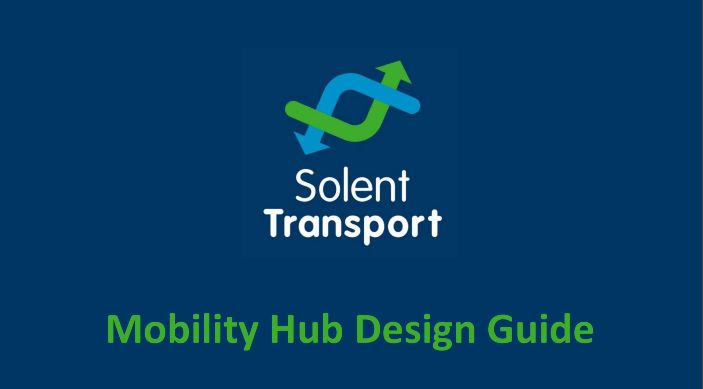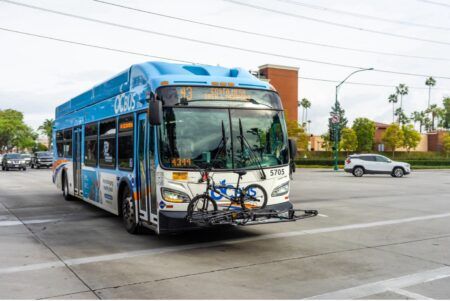Solent Transport, in partnership with Highways England, have created a guide to assist local authorities, transport operators, developers and community groups in designing and establishing Mobility Hubs. The Solent Transport Mobility Hub Design Guide provides information about what should be considered in the planning and development of a Mobility Hub. Guidance ranges from the different types of Hub models that might be adopted, to finances, regulations and risks.
While a mobility hub can mean different things to different people, according to CoMoUK a mobility hub is “a recognisable place with an offer of different and connected transport modes supplemented with enhanced facilities and information features to both attract and benefit the traveller” (Source: Mobility Hub Guidance, CoMoUK, November 2019).
It is important that these hubs are designed and spatially organised in an optimal way, to facilitate easy access to and between different modes. These may include shared modes such as cycles, scooters and car clubs. Spread over a wider area, mobility hubs can provide an unambiguous recognisable network of defined areas providing services to connect people through sustainable travel whilst improving the public realm. The design of the hub should be developed organically to suit the needs and requirements of the local community and be designed in harmony with its surroundings and adjacent infrastructure.

The Design Guide, initially created for the Solent Transport partners, has been written in a manner that focuses on the key principals around planning; making it a useful tool for projects across the UK, or further afield. Every site considered for a Mobility Hub will have differing constrains and the Design Guide seeks to support project leaders with a template that is flexible and avoids presenting definitive design standards.
Mobility Hubs are being considered as part of the region’s Transforming Cities and Solent Future Transport Zone programmes, as well as the M3 and M27 Travel Demand Management programmes. Solent Transport, alongside its local authority partners, is delivering more mobility solutions to the region. The inception of the Solent Future Transport Zone programme makes this an optimal time to look at the role of Mobility Hubs locally and nationally.
“Over the past year we’ve witnessed changes in the way people work, travel, send or receive goods and interact with others,” says Cllr Lynne Stagg, deputy chair of Solent Transport’s Joint Committee. “The creation of Mobility Hubs is a consequence of these changes and Solent Transport is proud to be a thought leader in this area. Well-designed Mobility Hubs offer the opportunity to integrate multiple services, improve environmental sustainability and support commercial growth. Plans for our own Mobility Hubs here in the Solent region are being developed.”





